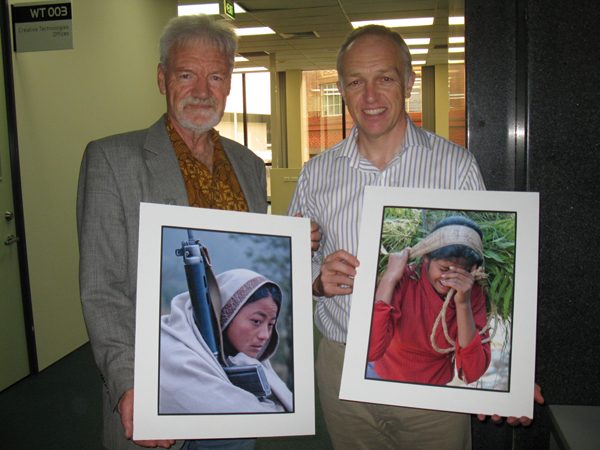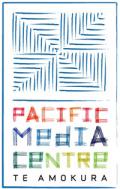
The photojournalism exhibition Frames of War has been donated to Amnesty International by the Pacific Media Centre on behalf of Kunda Dixit's collective of photographers who chronicled the 10-year Maoist war in Nepal.
 The 45 heart-rending images were presented in a brief handover ceremony yesterday attended by Amnesty International chief executive Patrick Holmes, PMC director associate professor David Robie, AI media officer Pui-Yi Cheng and exhibition curator Andrea Steward.
The 45 heart-rending images were presented in a brief handover ceremony yesterday attended by Amnesty International chief executive Patrick Holmes, PMC director associate professor David Robie, AI media officer Pui-Yi Cheng and exhibition curator Andrea Steward.
Dr Robie complimented AI for taking on the exhibition and enabling it to reach a wider audience in New Zealand, especially in schools and other educational institutions.
"These images are incredibly evocative and are about peace-building rather than focusing on war correspondence," said Dr Robie. "Kunda Dixit was a remarkably inspiring keynote speaker at the conference and these photographs are all about fundamental human rights and rekindling hope out of the casualties and destruction of warfare."
The exhibition was opened at the recent Media, Investigative Journalism and Technology (MIJT) conference at AUT University and had a two-week showing on campus.
Dixit, publisher of the Nepali Times, was in New Zealand on the PMC Asian Journalism Fellowship sponsored by the Asia New Zealand Foundation.
He told PMC journalist Courtney Wilson the collaboration of the photographers and picture editors had tried to make up for the gap in media coverage of the Nepal war by taking the role of a “peace correspondent” and trying to focus on the human cost, the effect on civilians, the women and children.
Most affected
“In all modern wars, they are the ones who are affected the most,” said Dixit.
Dixit thinks there needs to be a paradigm shift in journalism training from war correspondent to peace correspondent.
“Reporters who go to war are almost celebrities. They cover the war as a series of battles, they count the body bags and chronicle the carnage,” says Dixit.
“War correspondents focus on the battle plans, the strategy of the warring sides, and the hardwares of killing.
“A peace correspondent tries to look at the human cost so that the politicians who lead people to war understand the pain they have unleashed, or covering stories that help in the reconciliation process rather than polarising society.”
Many of the photographs were published in a book trilogy, starting with the volume A People War.
The power of a war-and-peace photo - all 179 of them
Dixit challenges benefits and pitfalls of virtual world for investigative journalism



